Lightweight electric mountain bikes are exploding in popularity. So much so, that they are threatening to overtake their ‘full-fat’ stablemates.
The latest lightweight eMTBs are now lighter than ever, proving that powerful pedalling assistance and low weight are not mutually exclusive.
In this guide, we’ll be taking a look at what a lightweight eMTB is, who should be riding one and who would benefit from riding a regular electric mountain bike instead.
Electric mountain bike vs lightweight electric mountain bike – what’s the difference?

As the name suggests, the key difference between a regular electric mountain bike and a lightweight one is the weight.
While regular eMTBs often weigh upwards of 24kg, the best lightweight eMTBs weigh in under 20kg, shaving a substantial amount of weight compared to their full-power siblings.
The key to this weight difference lies in the drive unit: the bike’s motor and battery.
Lightweight eMTB parts and components
Batteries
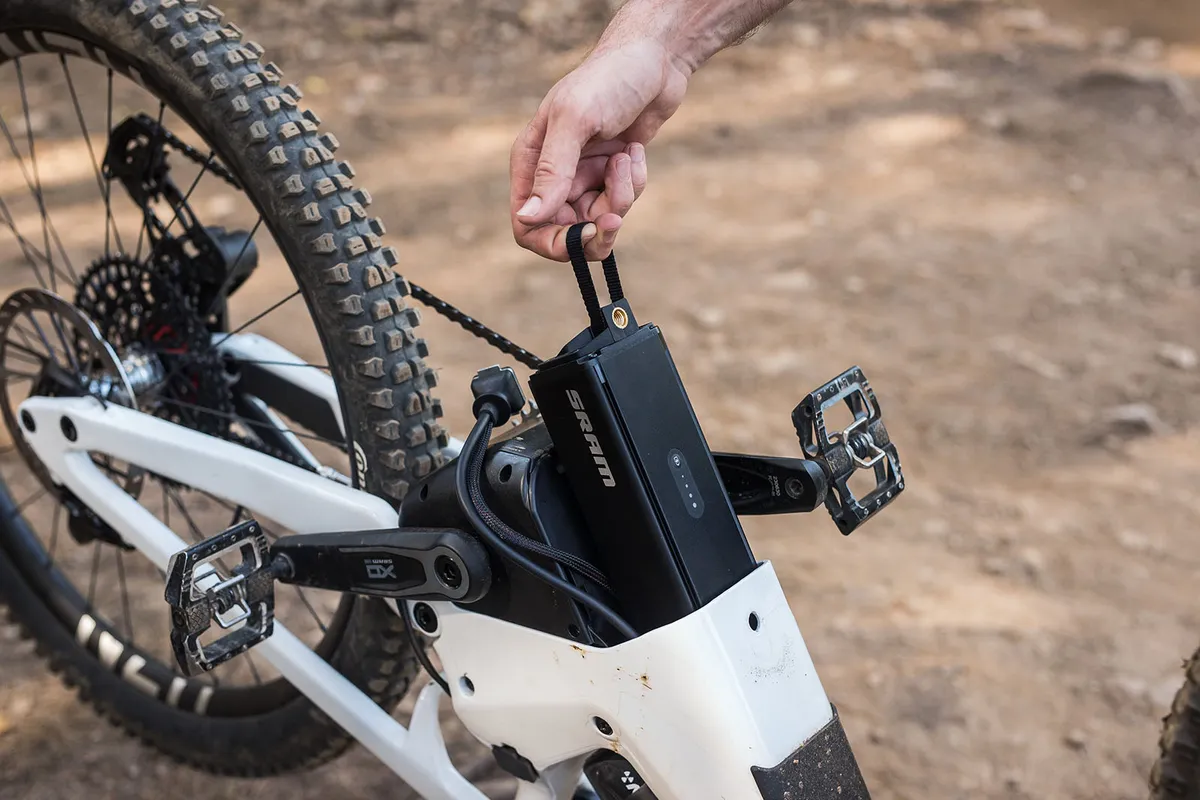
Batteries are heavy. So, by reducing the size and capacity of an ebike's battery, manufacturers can not only drastically reduce the weight but also streamline the overall bulk of the frame.
Compared to the battery capacity of most full-power ebikes, often sporting batteries with 700Wh capacity, lightweight ebikes tend to offer battery options with around half of that.
However, smaller and lighter batteries can still maintain range when paired with a specifically designed motor.
Motors
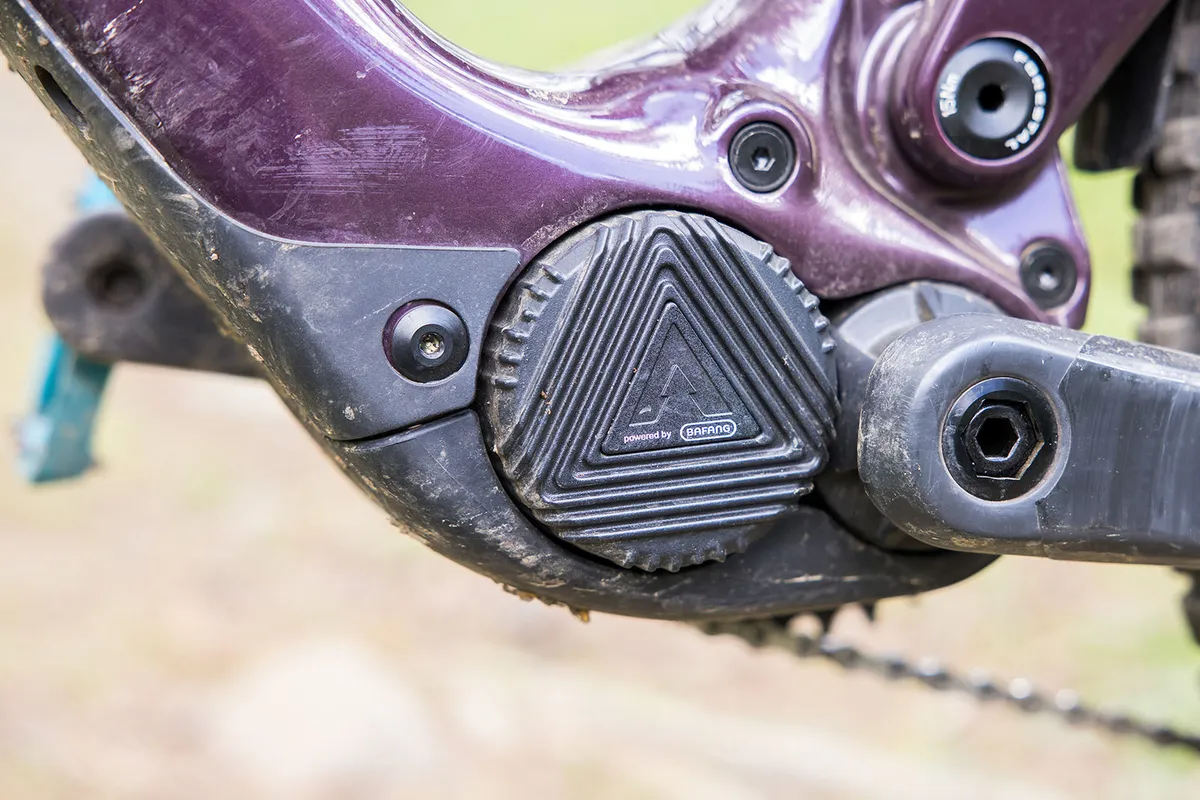
The motors found on lightweight eMTBs are noticeably smaller and quieter than full-fat ebikes. They also deliver 40-50 per cent less power and torque than full-power systems.
Another feature of these smaller motors is their power delivery is gentler. This can be a bonus for some riders, including those new to ebikes, or riders who like their assistance to be less obtrusive to the ride experience.
Components
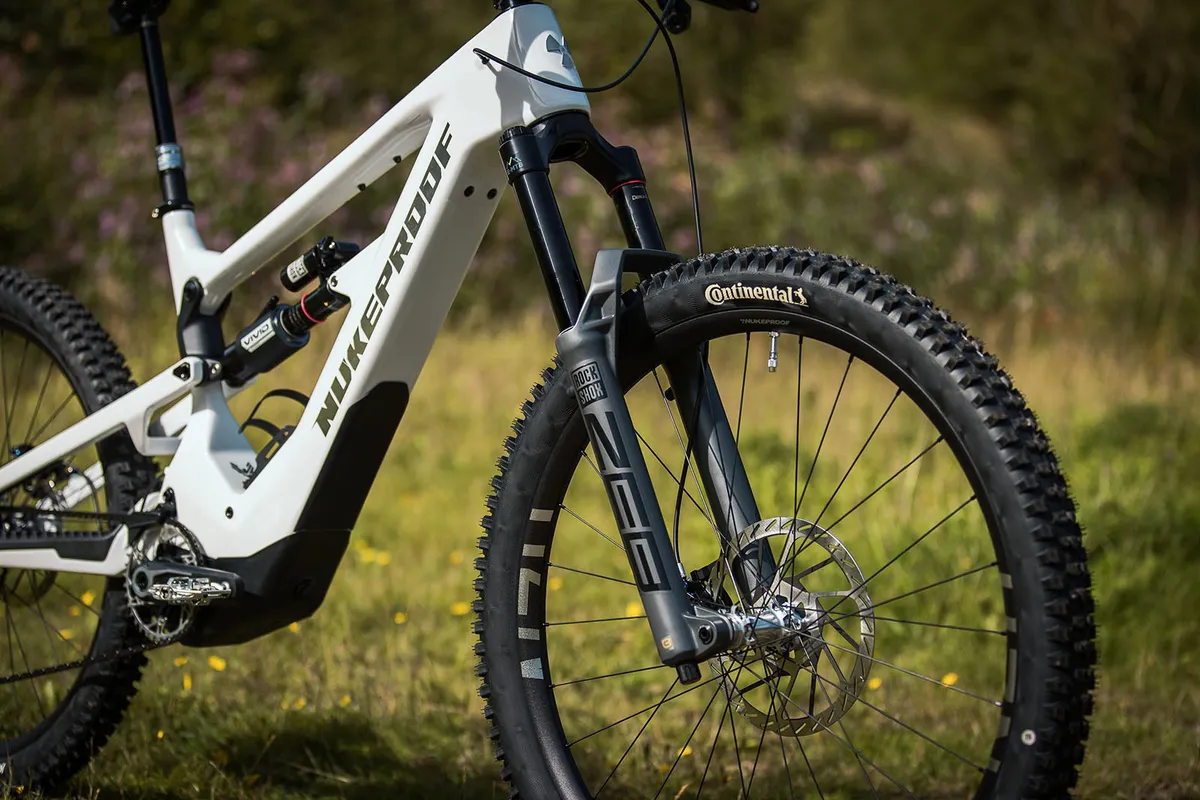
On full-power ebikes, the componentry must be heavy-duty. The brakes, drivetrain and suspension must withstand the high torque of the motors, the extra weight and the extended distances they can cover.
Therefore, some brands spec their eMTBs with capable downhill brakes and mountain bike tyres with tougher casings which, although slightly heavier, will make a difference when it comes to durability and performance on the trail.
On lightweight electric mountain bikes, manufacturers can spec lighter components to keep the overall weight down and provide a riding experience more akin to non-assisted mountain bikes.
A key visual difference that distinguishes lightweight eMTBs from their full-power cousins is the displays and controls. Manufacturers make efforts to bring the electrical interfaces in line with the organic ride feel, quiet motor and sleek frame, doing away with large screens and control surfaces.
Some brands even shun displays completely, using only a small LED panel to show you which power mode you’re using and how much battery power you have left. This removes distraction and enables the rider to focus on the trail ahead.
Lightweight eMTB vs eMTB – how do they compare on the trail?
Climbing
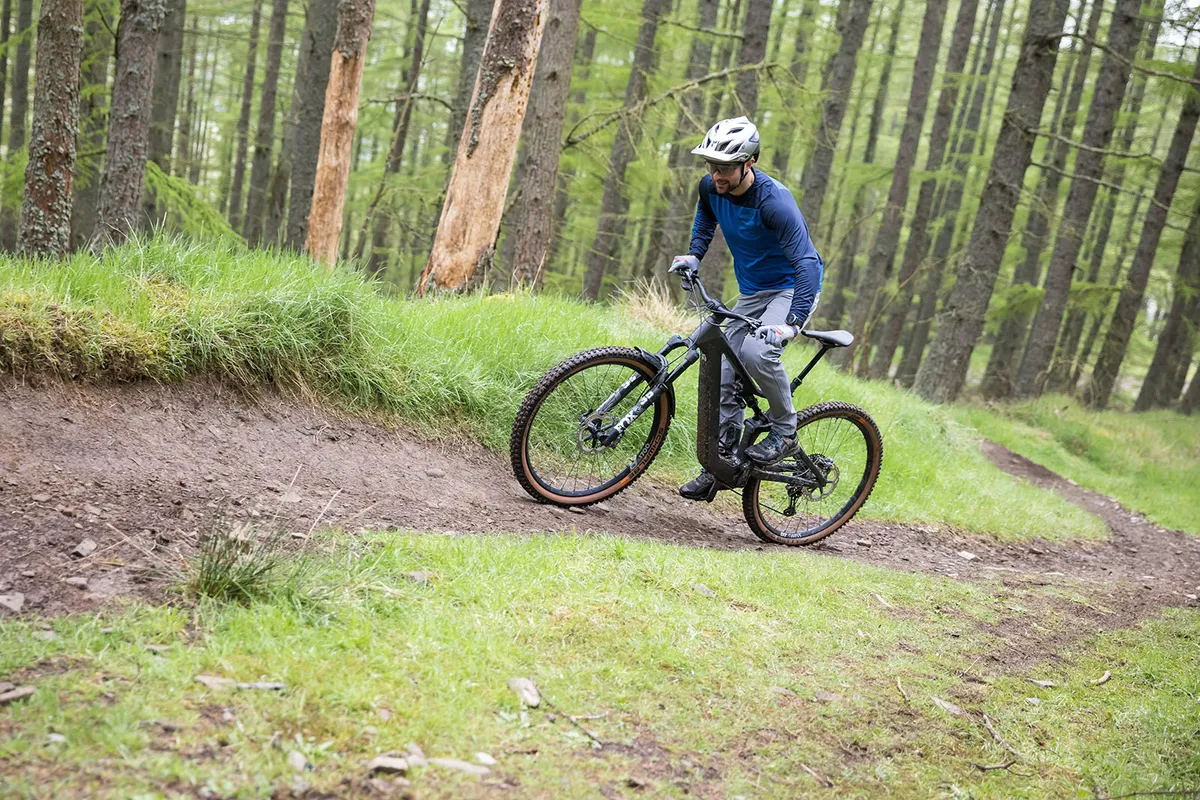
Lightweight eMTBs are usually great climbers. Granted, they don’t have the same maximum power output and punchy torque as full-fat eMTBs, but their unique characteristics make up for that in most cases.
Lightweight eMTBs are more manoeuvrable and agile, which comes in especially handy for riders navigating tight switchbacks or technical climbs. They are also more controllable on steep inclines, where their reduced torque helps to prevent unwanted motor kick.
On the flip side, due to their lower power and torque, gear choice becomes more important. As a lightweight eMTB rider, you can’t get away with being in the wrong gear, whereas on a full-fat ebike you can often lean on the motor’s power to push a gear that’s harder than you could manage on your own.
Descending
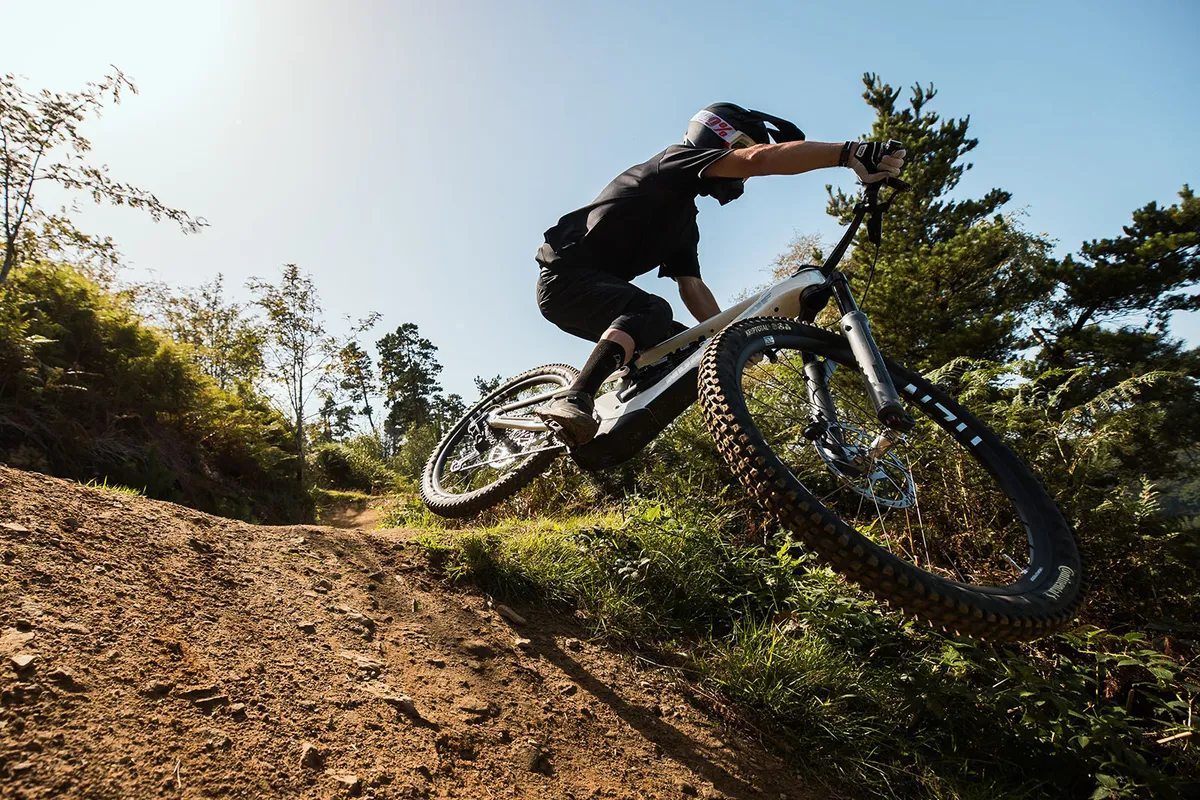
When descending, the power and assistance of the ebike motor quickly become obsolete. So, as with non-assisted mountain bikes, it all comes down to handling.
Lightweight eMTBs benefit from manoeuvrability that closely resembles non-assisted mountain bikes. This opens up greater potential for line choice and playfulness on the trail, and is especially noticeable for smaller riders.
Braking distances are also closer to those of non-assisted bikes. While heavier eMTBs can sometimes feel as though they’re running away from you on the steeps, lightweight eMTBs are more manageable and less tiring on technical descents.
What about lightweight eMTBs vs non-assisted bikes?
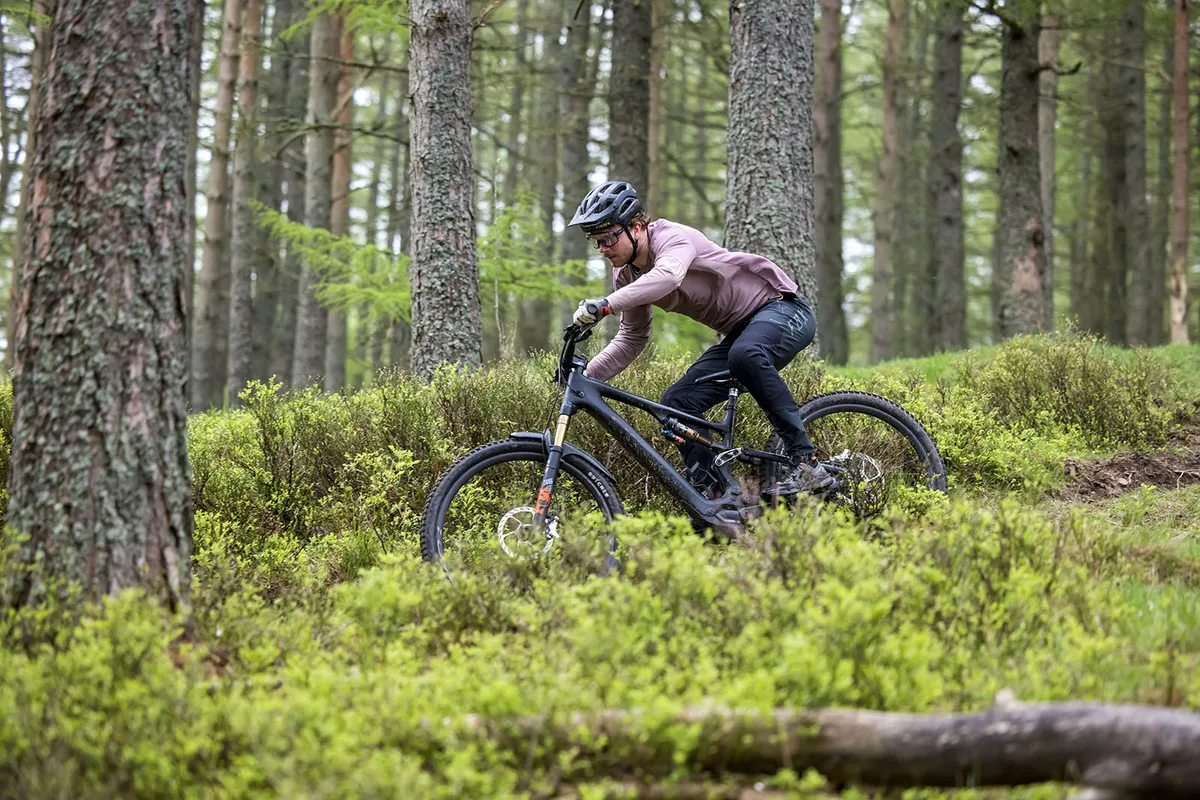
While lightweight electric mountain bikes go a long way to close the handling gap between full-fat ebikes and non-assisted bikes, there is still a distinction.
On the climbs, the motor enables the lightweight ebike to outperform a non-assisted bike despite the extra weight, while retaining similar handling.
When descending, the non-assisted bike will still come out on top in most circumstances. The lightweight eMTB, while certainly no slouch, will demand a bit more effort and input to change direction or line on the trail.
In some trail scenarios, however, the extra sprung mass (added by the motor and battery), which is centred low around the bottom bracket, can improve suspension action and therefore increase grip and stability.
How much do lightweight eMTBs cost?
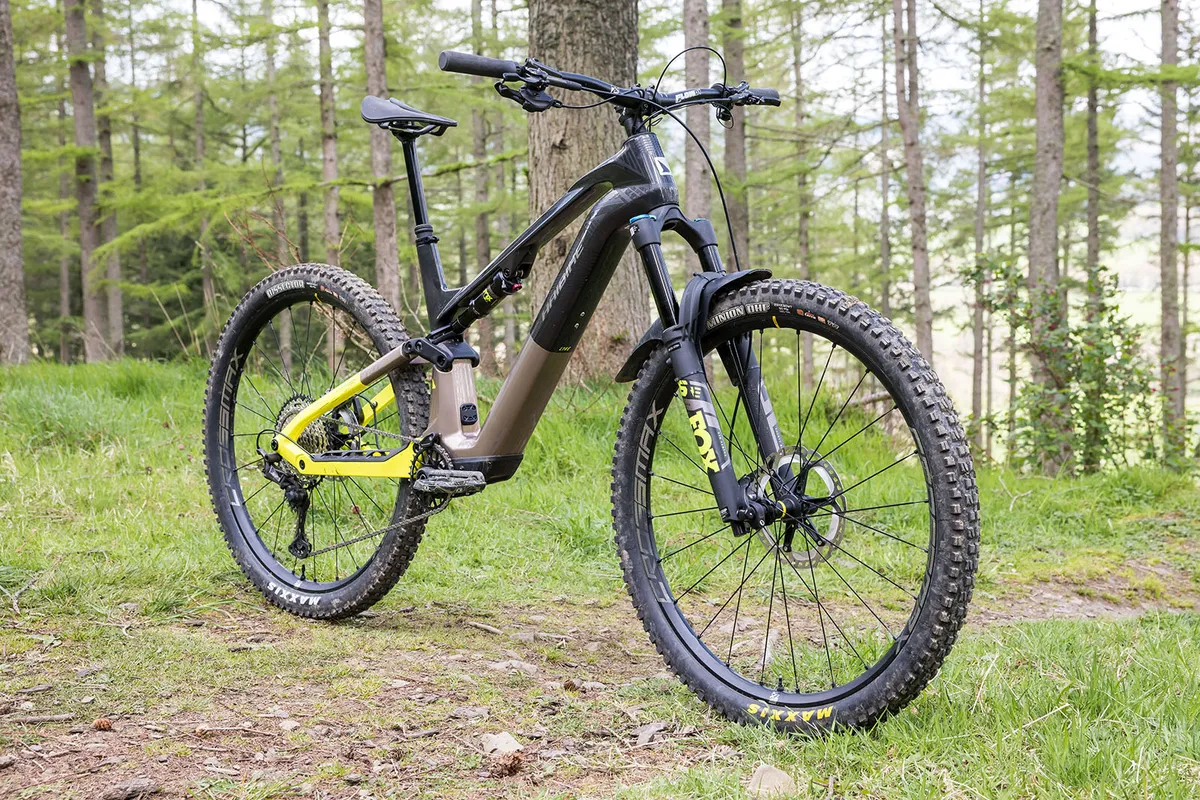
As one of the latest and greatest trends in the mountain bike industry, lightweight eMTBs don’t come cheap.
While full-fat electric mountain bike technology is starting to trickle down to more affordable price ranges, as seen on bikes such as the Vitus E-Mythique, lightweight eMTBs are currently reserved for those with deep pockets, with most options costing north of £5,000.
Should I buy a lightweight eMTB, a standard eMTB or a non-assisted mountain bike?
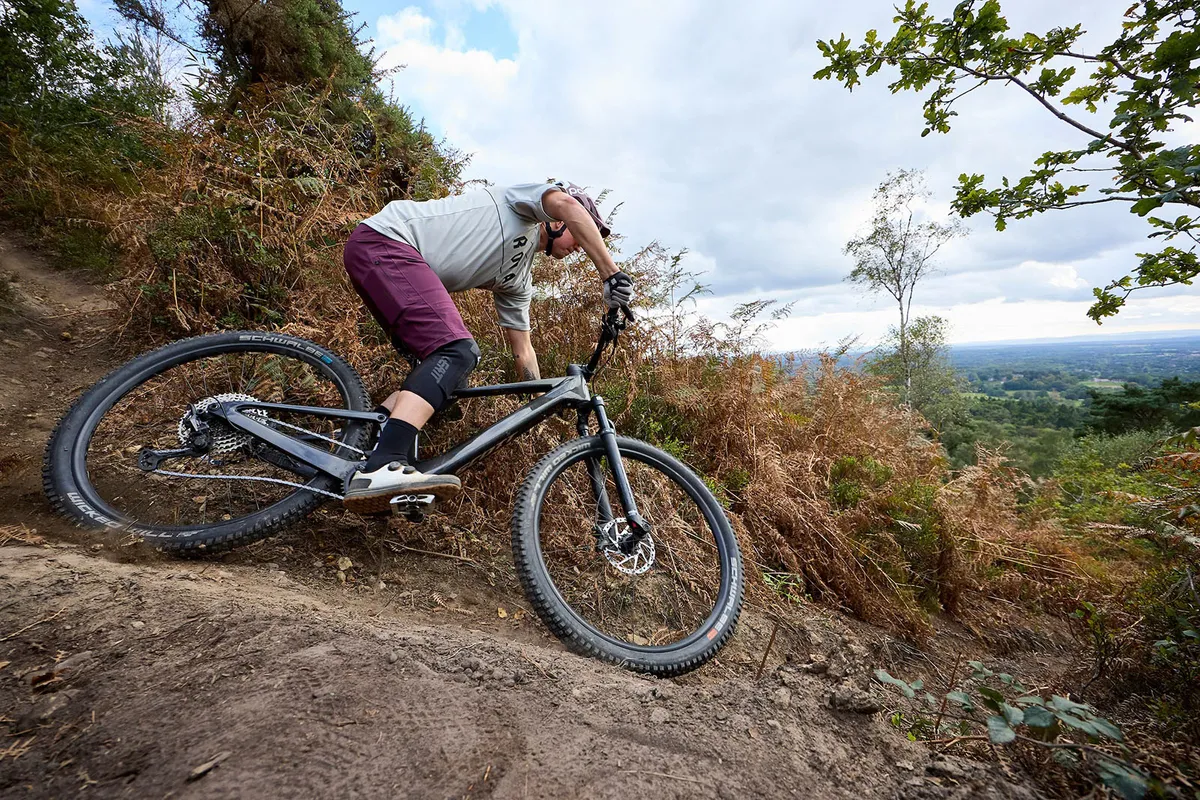
So, which type of ebike is for you, or should you buy one of the best non-assisted mountain bikes instead? While there isn’t a clear-cut answer, there are a few factors to consider.
What are your friends riding?
If your riding crew all whiz around on full-fat ebikes, you’ll soon be frustrated trying to keep up on a non-assisted bike.
Likewise, if your friends pedal non-assisted bikes and you rock up to a weekend ride in boost mode, you’ll leave them all in your dust.
If you need extra assistance to keep up with your mates, a lightweight eMTB may be the perfect option. With enough power to hold its own against full-fat ebikes in most situations, the natural ride feel and unobtrusive motor also makes it a great option for mingling with non-assisted bikes.
What do you ride for?
If you are riding to get in shape or improve your technical capabilities, a non-assisted bike will be the most versatile and give you the biggest workout. If you need a little helping hand, a lightweight eMTB is also a great option.
If you just want to make the most of a short time window, nothing will get you to the top of the hill as fast as a full-fat ebike. However, it is important to consider that all that power and weight will have an impact on the bike’s handling.
